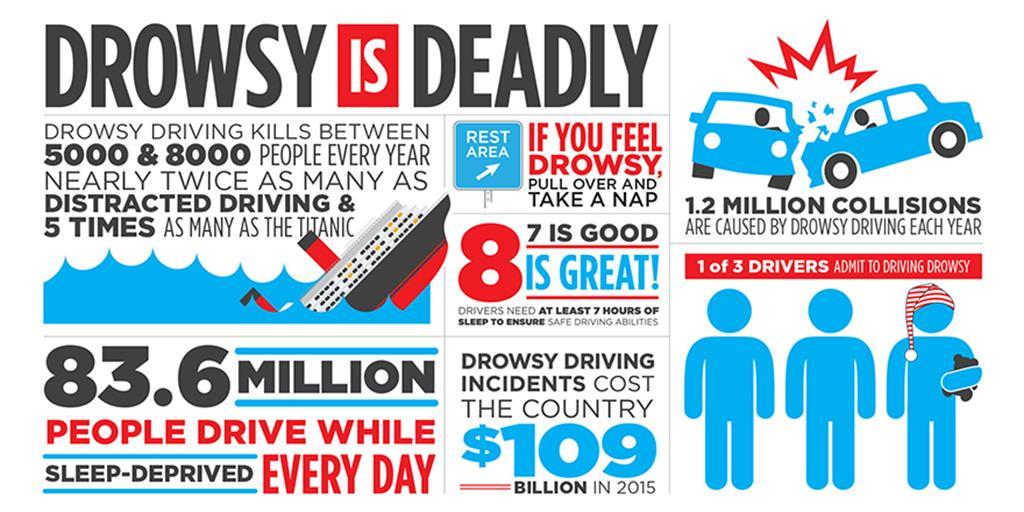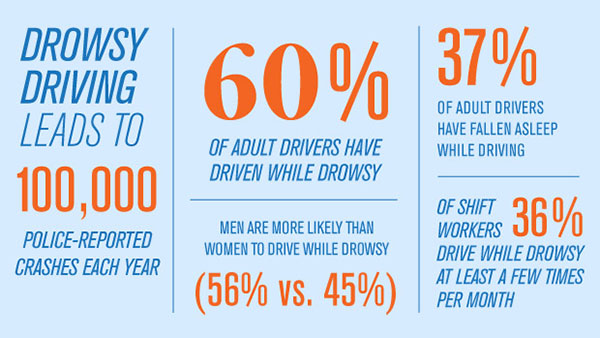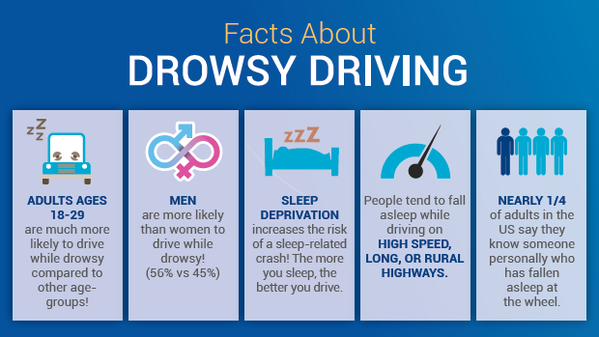Drowsy driving takes place when a driver becomes sleepy or fatigued while driving. If the driver has not slept enough, has a sleep disorder, takes medication or is a shift worker. Being tired affects the ability of the driver to drive safely even if they do not fall asleep. Drowsy driving leads to:
- drivers having less able to pay attention to the road
- drivers have slower reaction time if the need to brake or steer suddenly
- affects drivers ability to make good decisions
Facts about Driving Drowsy
Around 1 out of every 25 adult drivers ages 18 or older report having fallen asleep while driving in the past 30 days
The National Highway Traffic Safety Administration estimates that drowsy driving was responsible for 72,000 crashes, 44,000 injuries and 800 deaths
Drivers more likely to drive drowsy include:
- drivers that do not get enough sleep
- commercial drivers who operate vehicles such as tow trucks, tractor trailers and buses
- Those that work the night shift or long shifts
- untreated sleep disorders such as sleep apnea
- drivers who take medications that make them sleepy
While those are the largest categories of drivers who often drive drowsy we are all acceptable to the issue. Before getting in the car to take that drive be sure that you have had enough sleep and avoid taking any medications that may make you sleepy.
Be Safe Out There
retweet post here
post shared at these blog hops, linkups and parties
shared at these facebook group linkups
social media network === blog post share --- 12/13






No comments:
Post a Comment
I love comments so if you have a minute leave me your thoughts on the above post